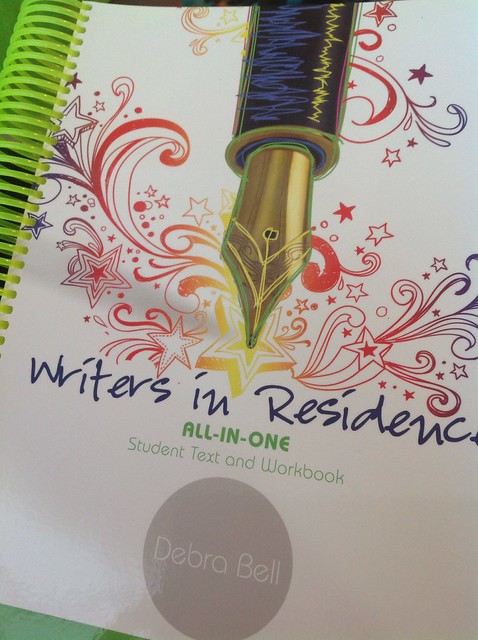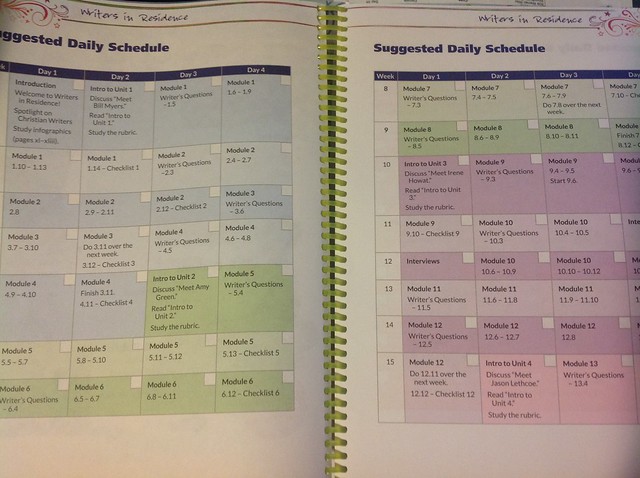After I received the spiral bound book (which is pretty thick), and its accompanying answer book, I read through the "How to use" section. I felt a bit overwhelmed at the thickness of this book at first, but reading the "how to use" section really helped alleviate some of the worry I had. It covers all the what's, how's, why's, etc., and gives a lot of great suggestions on how to use the book. Then it introduces the real-life writers that are featured in this book. I love that it looks at some real-life writers, and interviews them. It is one of my favorite features of this book.
After the "how to use" section it has a Suggested Daily Schedule. I was happy to find it laid out very similar to the science schedules. It gives you a daily suggestion that is easy to follow.
The first writer's spotlight is then introduced after the schedule, Bill Myers. We read about him, and learned that he has also writen, directed, and done voice work for the Family's Adventures in Odyssey. That led us to checking out a few of those audio books from the library. We even found one on DVD to watch too. The writer's spotlights are dispersed throughout the book at the beginning of each of the 6 units. It is a fun way to get to know some writers and their books and styles.
We then moved onto Unit 1, module 1 (the units are split into several modules) which starts out looking into our own memories for writing ideas. In Module 1, We checked out the book When I was Young in the Mountains by Cynthia Rylant, as suggested to help us see how we could write about our childhood memories. It was an enjoyable book that followed a pattern using the "When I was Young..." phrase. We used the charts to help map out some childhood memories of the boys. From that they can then write a draft of those memories for "When I was young..." using that phrase to begin each thought. Module 1 continues on to verbs, and module 2 covers nouns. This book has it all. It covers the basic conventions the English language, spelling, writing and editing.
It also has checklists at the end of each module to make sure all steps are completed, and to help with points and grading. It can be a great way for children to see the progress they are making in writing, especially if you don't usually grade writing assignments (like me). I like the step-by-step process throughout this whole book. Very easy for both student and parent to follow.
You can also find Apologia with these links:
Facebook: http://www.facebook.com/apologiaworld
Twitter: http://www.twitter.com/apologiaworld @apologiaworld
Pinterest: https://www.pinterest.com/apologia/
Instagram: http://www.instagram.com/apologia
Twitter: http://www.twitter.com/apologiaworld @apologiaworld
Pinterest: https://www.pinterest.com/apologia/
Instagram: http://www.instagram.com/apologia



No comments:
Post a Comment
Please leave a comment, I love to hear what you think.